INDEX
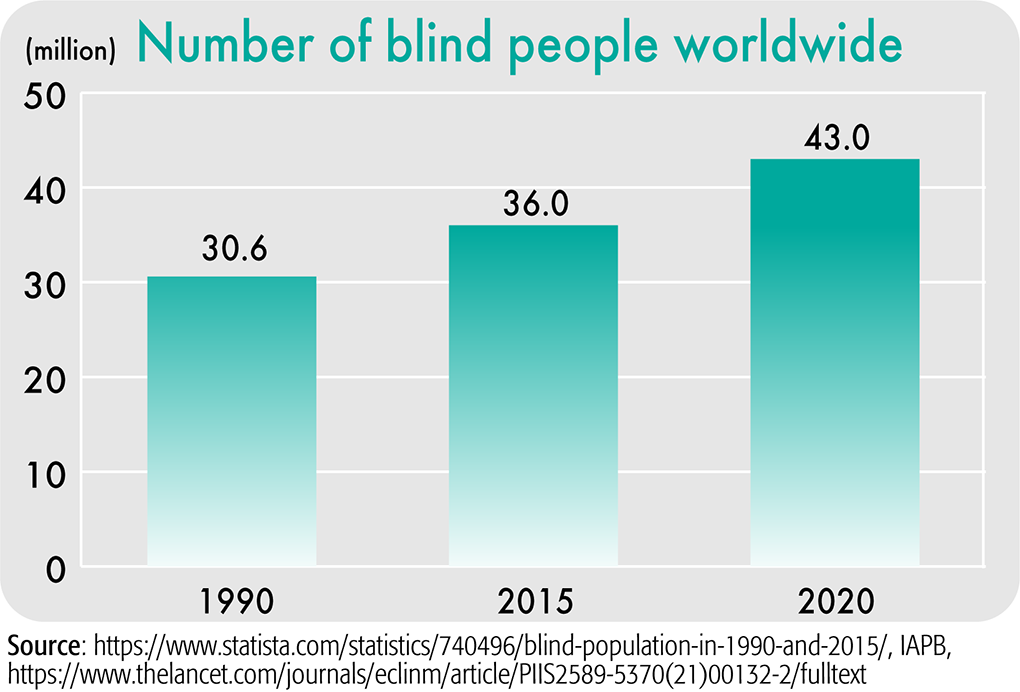

OUI Inc. CEO Shimizu Eisuke 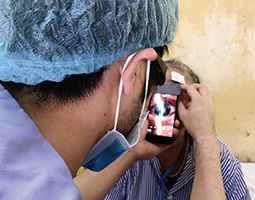
OUI Inc. CEO Shimizu Eisuke using Smart Eye Camera to examine a patient’s eye in Vietnam 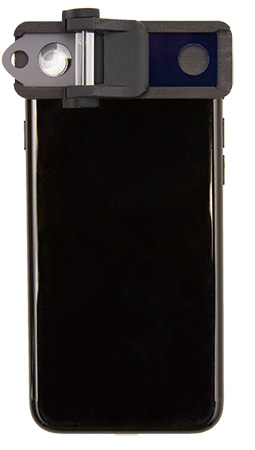
Smart Eye Camera attached to a smartphone 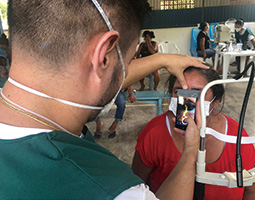
Ophthalmic diagnosis using Smart Eye Camera in an indigenous people’s village in Brazil 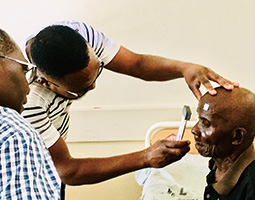
Examination using Smart Eye Camera in Malawi
December 2021
Diagnosing Diseases of the Eye with a Smartphone
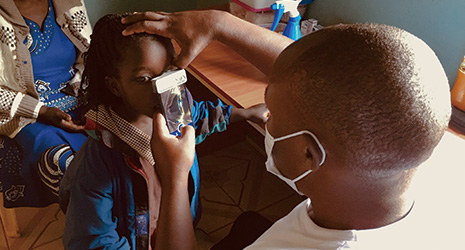
A Japanese startup company founded by ophthalmologists has developed a game-changing device that can easily diagnose diseases of the eye with a smartphone.

According to data for 2020,* there are 43 million blind people worldwide, predicted to reach about 120 million by 2050. In order to prevent this catastrophe, it is necessary to prevent and treat diseases that lead to blindness. In order to accurately perform such diagnoses, there is an absolute need for medical equipment for ophthalmic examination to facilitate detailed observation of the eye’s interior. However, at present, there are few ophthalmologists and not enough hospitals and clinics with the medical devices that are essential for diagnosis, especially in rural areas of developing countries.

Smart Eye Camera has brought hope about resolving this issue. It is an attachable medical device that fits over the camera and light source of a smartphone and can create the light necessary for eye examinations and take images of the eye.
The device was developed by an ophthalmologist, namely Dr. Shimizu Eisuke, who is also CEO, co-founder, MD, PhD of OUI Inc. Oui Inc. is a startup company that was established by Shimizu and other ophthalmologists from the Keio University School of Medicine. The idea for Smart Eye Camera was inspired when Shimizu visited Vietnam in 2017 as a volunteer for Fight for Vision, a Japanese NPO that aims to deliver eye care to patients in developing countries.

Shimizu recalls, “I visited a rural village about four hours away from Hanoi City to conduct medical examinations and surgery. In the rural clinic, there was no diagnostic device for ophthalmology. The medical staff examined patients’ eyes with penlights, and when the batteries ran out, they started using the light of a smartphone.”
A “slit-lamp microscope” is a medical device for diagnosis of the anterior segment of the eye. It is a device for observing the cornea and lens by shining a thin oblong bundle of bright light (slit light) onto a patient’s eye and magnifying the image. “It is a very basic and important device for ophthalmologists, like a stethoscope is for physicians,” says Shimizu. However, it is not in widespread use in rural areas of developing countries because it is bulky, heavy and expensive.

“Cataracts, a disease causing cloudy areas in the lens of the eye, account for more than half of the cases of blindness in the world. Cataracts affect everyone as they get older, but proper prevention and treatment increases the chance of avoiding blindness. Based on my experiences in Vietnam, I came up with the idea to invent a smartphone attachment medical device to convert the light of a smartphone into the light necessary for ophthalmic diagnosis of the anterior segment of the eye.”

After returning to Japan from Vietnam, Shimizu and his colleagues started making a prototype. After one and a half years of trial and error, they finally completed Smart Eye Camera.
Smart Eye Camera can generate three types of light—slit light, white diffused light, and blue diffused light—all of which are necessary for the diagnosis of the anterior segment of the eye. Using Smart Eye Camera it is possible to diagnose almost all eye diseases of the anterior segment with equal function to the conventional slit-lamp microscope.

OUI Inc. has also developed a dedicated software application for Smart Eye Camera which enables users to preview, manage and share the captured ophthalmic images in a secure environment.
“There exist other smartphone attachment medical devices for the anterior segment of the eye. However, most of them require extra batteries,” explains Shimizu. “Smart Eye Camera does not require an extra battery since it uses the camera and light source of the smartphone. In addition, compared to other such devices, it is very reasonably and competitively priced. We envision overcoming the increase of world blindness with our Smart Eye Camera. Therefore, we need to provide it at an affordable price so that it is widely used by many medical institutions in developing countries.”

Smart Eye Camera was registered as a medical device in Japan in 2019 and is already in use in Japanese clinical settings.
Smart Eye Camera will also make possible a new remote-diagnosis model of ophthalmology. By installing its software application, doctors (non-ophthalmologists) can capture images of the eye of patients and send them to remote ophthalmologists for consultation.
Since April 2021, Smart Eye Camera has been introduced on Miyako Island in Okinawa Prefecture and on seven of the Izu & Ogasawara Islands, where the local doctors employ the remote-diagnosis model in collaboration with ophthalmologists on the mainland.
“In many cases, the specialty of the doctors based on remote islands is not ophthalmology. However, with Smart Eye Camera, they can at least easily capture the ophthalmic images needed for diagnosis. By sending the images to the ophthalmologists on the mainland for consultation, patients on remote islands can be diagnosed without having to travel all the way to the mainland,” Shimizu explains.
OUI Inc. has also been conducting pilot projects in more than twenty countries worldwide, including in Africa, Latin America, and Southeast Asia, in cooperation with local ophthalmologists, medical institutions, NGOs and international organizations.
OUI Inc. is now also developing auto-diagnostic artificial intelligence (AI) for cataract evaluation, by putting the images taken by Smart Eye Camera into machine learning. Once completed, this work will help to bring a dramatic improvement in quality to eye-screening in rural areas.
“Oui Inc. envisions overcoming 50% of world blindness by 2025,” Shimizu says. “I hope that Smart Eye Camera is introduced by many medical professionals and support organizations all over the world as an innovative tool that can detect patients in need of treatment and connect them to ophthalmologists for medical solutions.”
* https://www.thelancet.com/journals/eclinm/article/PIIS2589-5370(21)00132-2/fulltext

